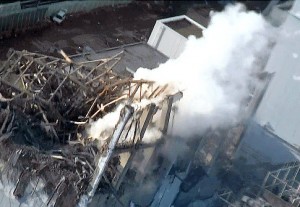Chernobyl
Chernobyl was a nuclear power plant located in the Ukraine. The disaster took place on April 26, 1986 at 1:23 am. The problem in the reactor was caused by a flawed reactor design with inadequately trained personnel. The inexperienced personnel took the power down and then tried to power it back up quickly to check whether a 40 second power gap in the cooling system could be bridged. The first night of the incident two plant workers died, another 28 died in the few weeks after the incident. 134 people were diagnosed with ARS or acute radiation syndrome. The accident at Chernobyl destroyed the Chernobyl 4 reactor. Large areas of Belarus, Ukraine, and Russia and beyond were contaminated in varying degrees.
20 Years later
Radiation from the disaster spread to parts of the western Soviet Union, Eastern Europe, Western Europe, Northern Europe, and eastern North America. Large areas in Ukraine, Belarus, and Russia were badly contaminated, resulting in the evacuation and resettlement of over 336,000 people. According to official post-Soviet data, about 60% of the radioactive fallout landed in Belarus. In some of those areas that were contaminated people were affected greatly. Children were born with several deformities and/or cancerous tumors.

25 Years later
The area is currently fenced in an area known as the Exclusion Zone. Remnants, still radioactive, are still inside. The enclosure is a 24 story concrete and steel encasement, that was quickly built after the event, but is currently structurally unsound and threatens to collapse. If it were to fall, enough radiation would be released to cause a second disaster of similar consequences. A new structure has been planned to be built around the current enclosure to ensure radiation does not escape, but the price for this is estimated to be about 2 billion dollars.
Differences between Chernobyl and Japan
· Chernobyl was a 3200 MV Reactor and the three reactors in Japan were 500 MV
· Chernobyl exploded while it was working at peak capacity and the reactors in Japan were turned off successfully after the first tremors of the earthquake
· Chernobyl was a Soviet RBMK-1000 reactor and the Japanese reactors were Boiling Water Reactors
· Chernobyl was a new design undergoing tests while the reactors in Japan were proven to work well
Brief Summary of How Nuclear Reactor Works
Japan
In some articles it describes the danger as being small. Only a small amount of radiation is currently being released from the damaged reactors in Japan. Once the reactors cool down, they can determine whether or not the cores are undamaged and whether or not people should be really worried.


Works Cited
Casselman, Ben, and Rebecca Smith. “How Nuclear Reactors Work... And the Dangers When They Don’t.” The Wall Street Journal. N.p., 15 Mar. 2011. Web. 7 Apr. 2011. <http://online.wsj.com/article/SB10001424052748704893604576200982857244782.html>.
“Chernobyl Accident.” World Nuclear Association. N.p., Mar. 2011. Web. 7 Apr. 2011. <http://www.world-nuclear.org/info/chernobyl/inf07.html>.
“Chernobyl: 25 Years After The Nuclear Disaster (PHOTOS).” HuffPost Green. N.p., 7 Apr. 2011. Web. 7 Apr. 2011. <http://www.huffingtonpost.com/2011/02/02/chernobyl-25-years-after-_n_816902.html#s233577>.
Marquand, Robert. “Japan’s nuclear crisis and Chernobyl: key differences.” The Cristian Science Monitor. N.p., n.d. Web. 7 Apr. 2011. <http://www.csmonitor.com/World/Global-News/2011/0313/Japan-s-nuclear-crisis-and-Chernobyl-key-differences>.
Waldoks, Ehud Zion. “’Comparison between Chernobyl, Japan out of place.’” The Jerusalem Post. N.p., 15 Mar. 2011. Web. 7 Apr. 2011. <http://www.jpost.com/Sci-Tech/Article.aspx?id=212169>.
Pictures/Video:
This blog post CHANGED my life! In both good ways: Very educational and well organized, and bad ones: The images disturbed me
ReplyDelete